Green Adder's Mouth - Malaxis unifolia
|
Malaxis unifolia - Green Adder's Mouth. (Syn. Microstylis unifolia.) There are over 250 species of Malaxis - Adder's Mouth - orchids in the world, most of them in Asia and the East Indies, but about 10 species are found in North America. Malaxis unifolia is the most widespread of the Adder's Mouth Orchids in the United States, found in swamps, bogs, barrens, and dry forests from Minnesota south to Kansas, Oklahoma, and Texas, and in all states eastward from there. It is listed for protection (Endangered, Threatened, etc.) in Connecticut, Florida, Indiana, New Hampshire, New York, and Rhode Island. (While M. unifolia is not found in Canada, there are two other species of Malaxis widely distributed in Canada.)
Found in:
AL, AR, CT, DC, DE, FL, GA, IA, IL, IN, KS, KY, LA, MA, MD, ME, MI, MN, MO, MS, NC, NH, NJ, NY, OH, OK, PA, RI, SC, TN, TX, VA, VT, WI, WV, GS
Leave comments on Malaxis unifolia at this link. | 
Distribution of Malaxis unifolia in the United States and Canada:
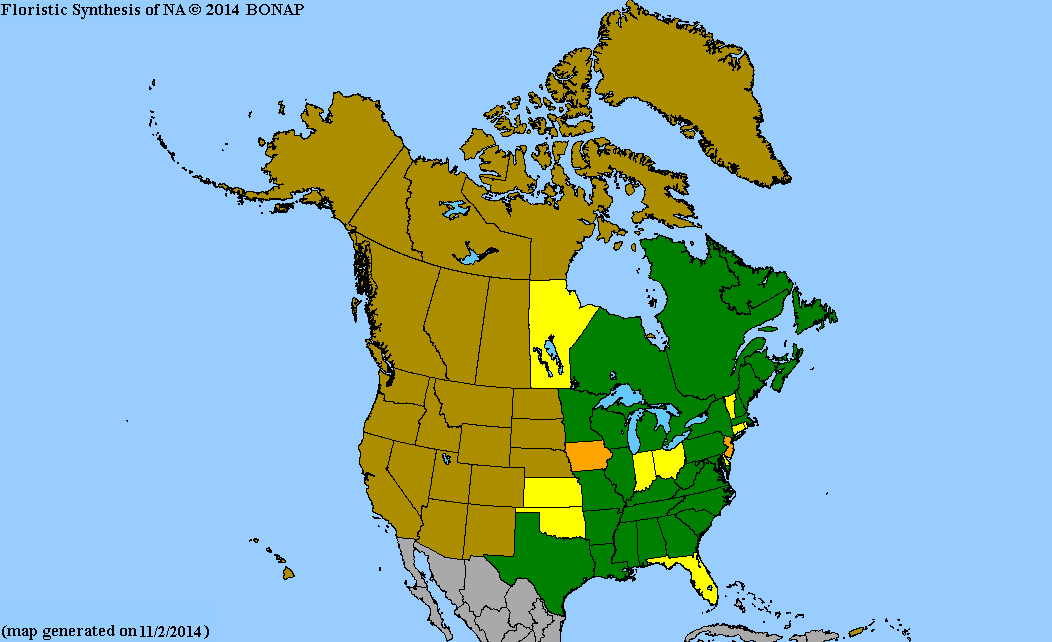
Map courtesy of The Biota of North America Program.
Map color key
Search Our Database: Enter any portion of the Scientific, Common Name, or both.
Do a general Google search of the entire site:
#ad
 Follow USWildflowers on Twitter
#ad
| | Site: May Prairie State Natural Area, Coffee County, TN Date: 2016-June-01 | Photographer: Gerald C Williamson
Nikon D7000
Tamron SP 90MM f/2.8 AF Macro | | Orchid flowers are complicated. In the case of Malaxis unifolia, the sepals, petals, and lip are all the same shade of green, although the petals, particularly the lip, may yellow more quickly than the sepals as the flower ages. There are three sepals, the lower appendages, with the dorsal sepal appearing as a spur (although not really a spur, which is part of the corolla) above the pedicel, and the two lateral sepals pointing away from the plant. The two lateral petals are "filiform" or "linear" - they are very narrow relative to their length, and strongly recurved. You can see one of these on the top-right flower in this photo. The 3rd petal, the lip, is described as being 3-lobed, but only two are obvious. I have not been able to find any of my photos which clearly show a 3rd lobe (or tooth) on the lip, although knowing from the description that there is one, I can see an indistinct lobe between the two lateral lobes in some photos. | | 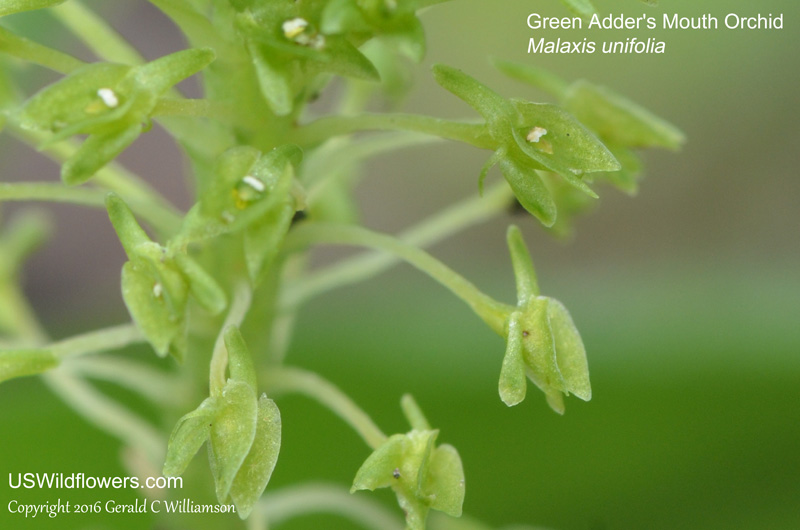
| | Site: May Prairie State Natural Area, Coffee County, TN Date: 2016-June-01 | Photographer: Gerald C Williamson
Nikon D7000 | | Malaxis unifolia is so named (unifolia) because it normally has a single leaf (although it will on rare occasions have two). The leaf sheaths the stem about halfway up the stem. This plant is very inconspicuous due to its entirely-green color and the fact that it is rarely more than 10 inches tall, frequently much shorter, sometimes no more than 2 inches. Several other Malaxis species also have a single leaf. If you find a similar plant with two leaves, it may also be Listera (Twayblade) rather than Malaxis (Adder's Mouth). | | Click on the photo for a larger image
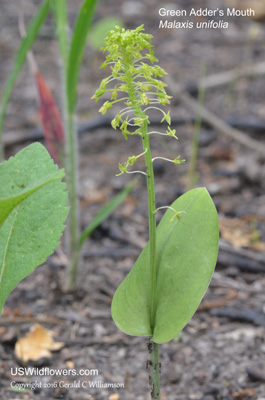
| | Site: May Prairie State Natural Area, Coffee County, TN Date: 2016-June-01 | Photographer: Gerald C Williamson
Nikon D7000 | | The inflorescence is very dense as the flowers first start to open, giving it an umbellate appearance. As it elongates, the racemose form then becomes obvious. | | Click on the photo for a larger image
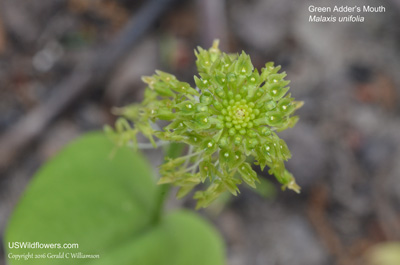
| | Site: May Prairie State Natural Area, Coffee County, TN Date: 2016-June-01 | Photographer: Gerald C Williamson
Nikon D7000 | | The inflorescence of Malaxis unifolia is a raceme of 10 to 160 flowers, each carried on a pedicel of about 1/2 inch length. The flowers are about 1/10 inch across. | | Click on the photo for a larger image
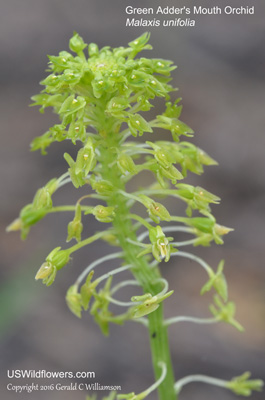
| | Site: May Prairie State Natural Area, Coffee County, TN Date: 2016-June-01 | Photographer: Gerald C Williamson
Nikon D7000 | | The stem is ribbed or fluted. There are small, inconspicuous triangular floral bracts at base of the pedicel. | | Click on the photo for a larger image
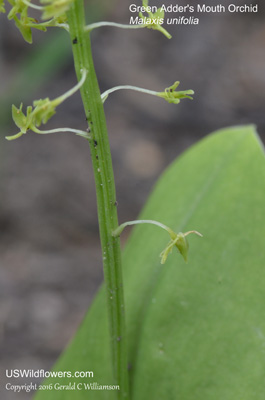
|
References used for identification and information:
|
|
| |
| #ad
|
|







